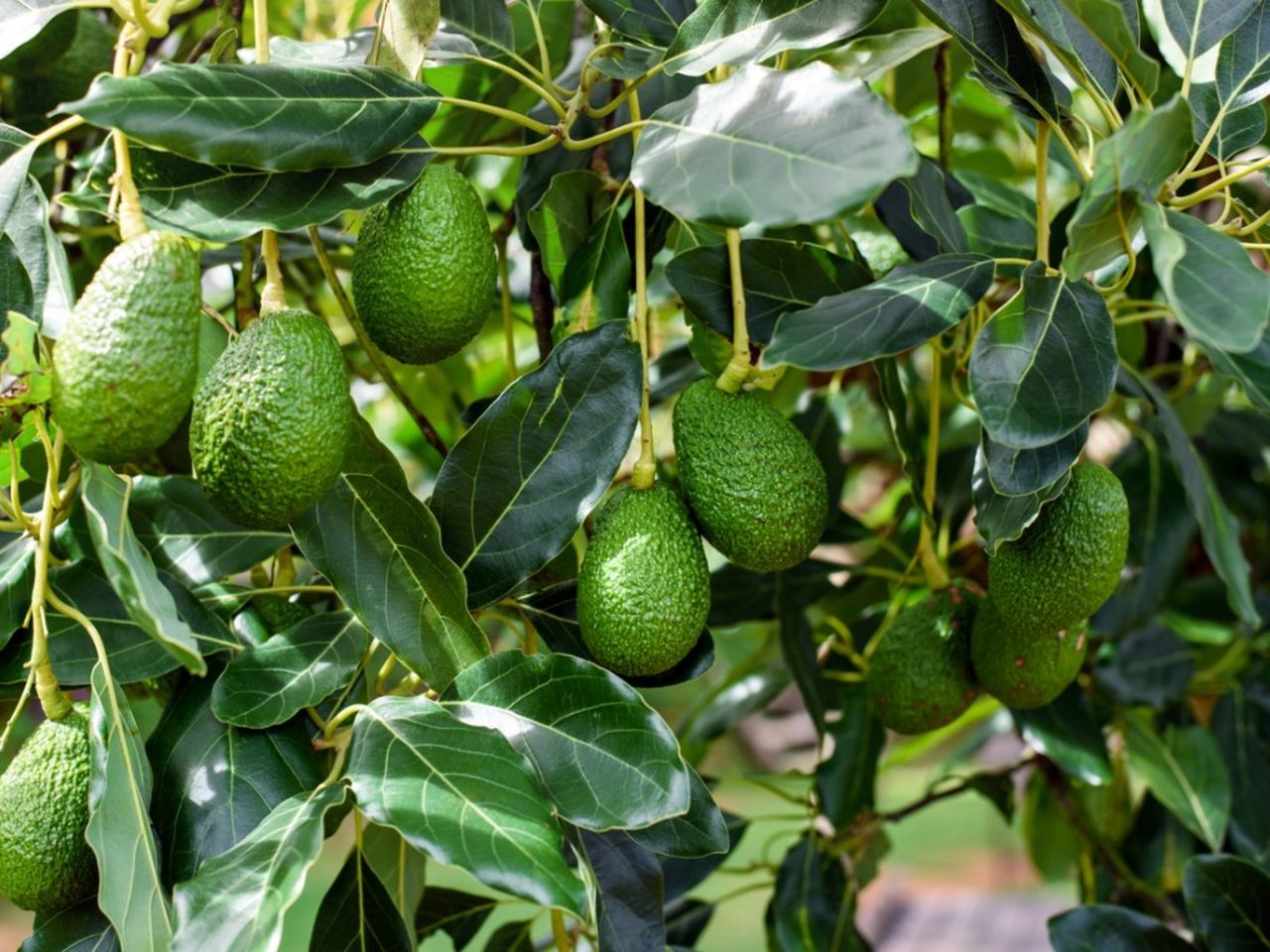1. Choose the Right Avocado Variety: Opt for compact varieties like ‘Wurtz’ or ‘Little Cado’ suitable for indoor growth.
2. Start with a Healthy Seed: Remove a seed from a ripe avocado, clean it, and suspend it in water until it sprouts roots and a stem.
3. Germinate the Seed: Place the seed in a warm, sunny spot and change the water regularly. Roots and a stem should appear within a few weeks.
4. Potting the Seedling: Transplant the seedling into a small pot filled with well-draining soil once roots are a few inches long.
5. Provide Optimal Conditions: Place the pot in a sunny location with temperatures between 65-85°F (18-29°C) and maintain humidity.
6. Water and Feed Regularly: Keep the soil consistently moist but not waterlogged, and fertilize every 4-6 weeks during the growing season.
7. Pruning and Training: Prune regularly to encourage bushier growth and train the tree’s shape using staking or tying.
8. Pollination: Avocado trees are self-pollinating, but indoor trees may benefit from hand pollination using a soft brush.
9. Be Patient: Avocado trees take years to bear fruit, so be patient and continue providing care and maintenance.
10. Harvesting: Once the tree bears fruit, allow avocados to ripen on the tree and harvest when fully mature for tasty homegrown treats.
With proper care and attention, your indoor avocado tree can thrive, bringing both beauty and bounty to your home.

Avocados are a source of vitamins and nutrients. Their popularity as a condiment or use in salads is enhanced by the sunny climates evoked by their presence on the menu. Planting avocado trees outdoors is not a viable option for most United States gardeners because of the plant’s preference for tropical to sub-tropical temperatures and its frost sensitivity. However, you can learn how to plant an avocado tree as a potted indoor plant or in a protected area outdoors to grow your own crop of this rich, versatile fruit. Warm indoor temperatures, bright sunlight and good avocado tree care can have you on your way to homemade guacamole and a host of other gustatory delights.
Avocado Information
Avocado tree growing is a fun way to introduce organic fruit for you and your family. Avocados may be medium to large trees but dwarf varieties exist for home growing. The trees have fragile limbs that are easily damaged by wind and the entire plant is very sensitive to cold conditions. The avocado tree is evergreen with thick, leathery leaves and produces perfect white, ivory to yellow flowers. The fruit has a large seed or pit in the center and may be green or nearly black. Avocado information wouldn’t be complete without mentioning the three distinct groups of the fruit from which all cultivars derive. These main varieties are:
West Indian
Guatemalan
Mexican
How to Plant an Avocado Tree
Choose a location where there is plenty of sun exposure and well-drained soil when planting avocado trees. A location on the southern side of the home or in a dip or valley will ensure protection from winds. Incorporate plenty of organic matter into the soil and check the soil for porosity. If you have soil that doesn’t drain well, work in sand or other gritty matter to increase its drainage. Also, you need to leave 8 to 10 feet (2.5 to 3 m.) from buildings and up to 30 feet (10 m.) of space apart when planting avocado trees.
Avocado Tree Growing
Avocados do not grow true from seed but you can get an interesting plant from starting a pit. Although many gardeners have experimented with germinating a pit in a glass of water, most avocados are propagated from tip grafting and the resulting seedlings will exhibit the characteristics of the graft wood or parent plant. Plant grafted seedlings with the graft under the soil, which is uncommon for other grafted trees. Stake young trees and keep them free of weeds while they are establishing.
Avocado Tree Care
Planting avocado trees properly is only the first step to getting fruit. Avocado tree care must include deep, thorough watering when the growing season is in full swing. The trees benefit from fertilization in February through September. Use ammonium sulfate applications spread out over this period. In the first year after planting, apply 1/2 cup (120 ml.), which increases to 1 cup (240 ml.) per month. Once the tree is two years old, application can increase to 2 cups (480 ml.) every month. There is no need to prune the tree except to remove dead wood in spring. You can, however, prune an avocado to maintain size, if desired. Most trees produce fruit within a couple of years.
News
NAGSASALITA SIYA SA WAKAS! Ibinunyag ni Kyline Alcantara ang Tunay na Dahilan sa Paghiwalay Nila ni Kobe Paras — “I Deserved Better”/hi
After months of silence and speculation, Kyline Alcantara has broken her silence on her highly publicized breakup with basketball star Kobe Paras — and her revelation is…
Cristine Reyes Breaks Her Silence! Reveals Marco Gumabao’s ‘Dark Secrets’ After Shocking Breakup/hi
In a turn of events that has left the entertainment world stunned, actress Cristine Reyes has finally spoken out following her explosive breakup with actor-model Marco Gumabao…
Ricky Rivero Has Passed Away: The Heartbreaking Final Moments of the Former Actor and Dancer/hi
Manila, Philippines – A wave of grief has swept across the entertainment industry as news broke that former actor and dancer Ricky Rivero has passed away. Known…
Nagulat ang lahat! After 14 years of marriage, Kristine Hermosa posted the whole truth on social media /hi
After 14 years of marriage, Kristine Hermosa, one of the beauties of the Philippine screen, has surprised the online community when she posted a touching post on…
SHOCK: CHRISTINE DACERA’S LAST MOMENTS IN CR WERE CAPTURED BEFORE SHE LEFT. A warning to all women./hi
Remembering Christine Dacera: A Wake-Up Call for Women’s Safety and Justice in the Philippines Christine Angelica Dacera was more than just a name in the headlines. She…
😲 Unexpected Twist? Ice Seguerra Trends Online After Netizens Claim They Spotted a Baby Bump!/hi
Singer Ice Seguerra has dismissed a viral art card claiming she is pregnant. “I AM NOT PREGNANT!!! This is just a rumor,” Ice simply rebutted the spreading…
End of content
No more pages to load











